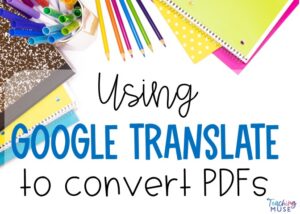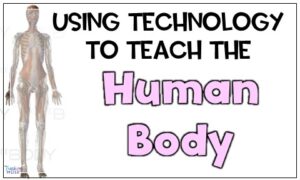As a science teacher, are you wondering
“How can I make science more engaging?”
Unfortunately, there isn’t one clear-cut answer. It takes an endless bag of tricks to keep these students engaged. If you have followed me for a while, you know that my favorite way to keep them involved in science is through hands-on activities.
Another way to inspire students is to bring in a real-life scientist!
Why?
You may be asking yourself, “How will that engage my students?”
Students often fail to see the real-life connection between what they are learning in school and how it applies to life outside of school. Bringing in a scientist allows students to understand real-life connections and why learning about your science topic matters.
A new face, a new voice, new personality in the classroom can pique students’ interest. Maybe the scientist looks more like them, so they feel a connection.
Lastly, this will feel like a “break” for the students. They can listen, respond, and learn without having to worry about a test or an assessment afterward. Sometimes they need chances like that to immerse themselves into the subject area fully.
Ok, I’m sold. Where do I find the scientists?
Here is a list of places you can use to connect your science classroom with a scientist.
Skype a Scientist: (ANY AGE / GRADE) This may be the most well-known. Don’t let the name fool you when the program was started; Skype was really popular. Now, the scientists are pretty flexible in the program to use to connect with you.
They recently expanded their program by offering teachers and families to sign up.
Another great feature is their EVENTS page. This features a calendar of events that they are holding. Essentially, a scientist is scheduled to be live, and you can jump in if the time works for you. If the time doesn’t fit into your calendar, they have a YOUTUBE channel to watch the replay!
National Geographic Explorer Program: (AGES 9-14) National Geographic has an Explorer Classroom, allowing students a deeper inside look into the world around them. This program is suited for students in grades 3-8. It follows Mondays at 10 am EST and Thursdays at 10 am and 2 pm EST. You can register for the event ahead of time and rewatch anything you may have missed or cannot attend. Currently, there are 185 past presentations that you can scour through. Their live offering list is currently only updated through February and includes cool topics like pyramids, reptiles, and hummingbirds.
NASA Scientist Chats: This would be a good area to use if you wanted your students to research a scientific topic related to space. Visually, it seems a bit outdated, but it is created in a way to mimic a question-and-answer chat with a scientist.
National Biodiversity Teach-In: If you are teaching units about biodiversity, meaning the variety of plants, animals, and other organisms in an area, this site will allow you to talk to scientists in your specific field of study. Like the other sites, there are ongoing presentations that you can sign up for and a list of the past ones to use in your classroom. In addition, much of their playlist includes videos about planetariums, ocean life, and interactions with nature.




